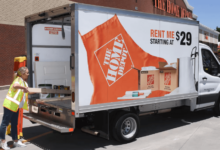Signs It’s Time for a Stair Lift: When Seniors Should Consider One

Aging can bring about various mobility challenges, making daily tasks increasingly difficult. One of the most significant obstacles for many seniors is navigating stairs safely and comfortably. While some may attempt to adapt by using handrails or taking breaks, there comes a point when these adjustments are no longer sufficient. This is where stair lifts for seniors become an essential solution. Recognizing the right time to invest in a stair lift can significantly improve safety, independence, and overall quality of life.
Frequent Difficulty Climbing Stairs
1. Increased Fatigue
Climbing stairs can be physically exhausting, particularly for those with limited stamina or underlying health conditions. If a senior frequently stops to catch their breath or avoids stairs altogether, it may be time to consider a stair lift. Fatigue can lead to slower movements, increasing the time spent on the stairs and heightening the risk of missteps. A stair lift provides a safe and efficient alternative, ensuring mobility without unnecessary exertion.
2. Dependence on Handrails
While handrails provide some support, over-reliance on them suggests a lack of confidence or stability. This can increase the risk of falls and highlight the need for a safer option. Holding onto the railing tightly or needing to use both hands may indicate a decline in balance and strength. A stair lift removes the need for such strenuous efforts, offering a secure seated ride up and down the stairs.
3. Pain and Discomfort
Experiencing pain in the knees, back, or legs when using stairs is a clear indication that the movement is placing too much strain on the body. A stair lift can alleviate this burden by providing a smooth, seated ascent and descent. Chronic pain can discourage seniors from using stairs altogether, leading to isolation in certain areas of their homes. By eliminating this discomfort, stair lifts help seniors maintain access to all parts of their houses.
See also:
Increased Risk of Falls or Loss of Balance
1. Dizziness or Vertigo
Conditions like low blood pressure, inner ear problems, or medication side effects can cause dizziness, making stair navigation risky. A stair lift eliminates this danger by providing stable transport. Even a brief moment of lightheadedness while on the stairs can lead to a dangerous fall.
2. Recent Fall Incidents
If a senior has experienced a fall on or near the stairs, it is a clear warning sign. Even a minor slip can have serious consequences, and a stair lift helps prevent future accidents. Falls often result in fractures, head injuries, or a loss of confidence in mobility, making stair use even more intimidating. By installing a stair lift, families can take proactive steps to prevent another fall and protect their loved ones.
3. Fear of Falling
Anxiety about using stairs can limit mobility and confidence. Seniors who avoid stairs due to fear may find themselves confined to one level of their home, reducing their overall quality of life. This avoidance can lead to a sedentary lifestyle, contributing to muscle weakness and further mobility decline.
Joint Pain or Mobility Limitations
1. Arthritis and Joint Stiffness
Many seniors experience arthritis, which can make bending and stepping painful. A stair lift eliminates the need for repetitive joint movement, reducing strain on knees, hips, and ankles. Pain from arthritis can fluctuate, making some days more difficult than others, and a stair lift ensures mobility regardless of the pain level.
2. Post-Surgery Recovery
After surgeries like knee replacements or hip operations, mobility is often temporarily impaired. A stair lift provides a comfortable way to navigate stairs without exacerbating pain or delaying recovery. During rehabilitation, minimizing unnecessary strain on healing tissues is crucial for proper healing. A stair lift allows seniors to continue their recovery at home without worrying about the physical challenge of stair climbing.
3. Progressive Conditions
Conditions such as Parkinson’s disease, multiple sclerosis, or muscular dystrophy can gradually reduce strength and coordination. Installing a stair lift early on can help maintain mobility and independence for as long as possible. As these conditions progress, daily tasks become more difficult, and a stair lift can provide long-term accessibility and peace of mind. Proactively installing one ensures that mobility remains possible even as physical abilities change over time.
Caregiver Recommendations and Safety Concerns
1. Increased Supervision Needed
If a senior requires assistance or supervision when using stairs, a stair lift can restore their ability to move around the home independently. Having to rely on a caregiver for stair navigation can be frustrating and reduce a senior’s sense of autonomy. A stair lift allows them to retain independence while ensuring their safety.
2. Caregiver Fatigue
Constantly helping a senior up and down the stairs can be physically demanding for caregivers. A stair lift reduces the burden on family members and professional aides, allowing for safer and easier movement. Caregivers are often at risk of injury themselves when assisting with stairs, making a stair lift beneficial for both the seniors and their support system. By installing one, families can provide a safer and more efficient caregiving environment.
3. Home Safety Evaluations
Occupational therapists or home safety specialists often recommend stair lifts for seniors at risk of falls. If an expert suggests this modification, it’s worth serious consideration to enhance long-term safety and comfort. These evaluations take multiple factors into account, such as balance, muscle strength, and home layout.
Conclusion
Recognizing the signs that indicate a need for a stair lift can prevent injuries and enhance a senior’s independence. Whether it’s difficulty climbing stairs, increased fall risks, chronic pain, or caregiver concerns, a stair lift offers a practical solution for maintaining mobility at home. Rather than waiting for an accident to occur, proactively installing a stair lift ensures safety and peace of mind. For seniors facing challenges with stair navigation, a stair lift is an invaluable investment in their well-being and overall quality of life.







